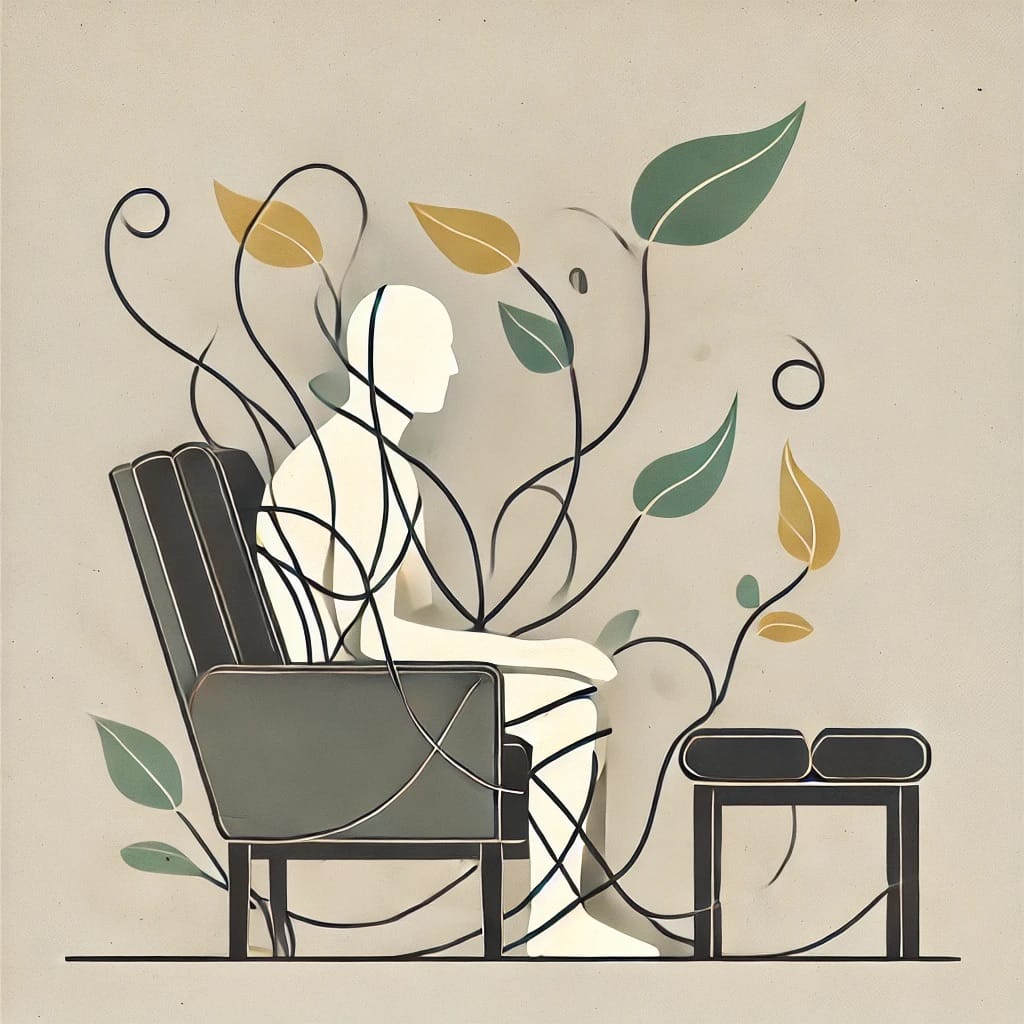There is a moment, quiet and unassuming, when you sit across from a therapist and realize the chair has grown familiar. Too familiar. What once felt like a doorway to possibility now feels like a well-worn path circling back to itself. You return week after week, month after month, speaking the same truths in different shapes, asking the same questions in softer tones, waiting for a clarity that never fully comes. Therapy, a place that promised liberation, has instead become a tether. And perhaps, without knowing, you’ve allowed it to be.
The purpose of therapy, we are told, is to heal, to offer tools that help you face life with all its uncertainties. It is meant to guide you back to yourself, to steady you as you relearn how to trust your own voice. But what happens when therapy lingers too long? When the work becomes less about movement and more about maintenance? What does it mean to grow in therapy—and what does it mean to stay?
Too often, we confuse consistency with progress. Sitting in the same chair every Tuesday at noon can feel like commitment, a proof of effort, but effort is not the same as change. Have you grown, or have you simply built a ritual around the hope of growth? If you cannot move forward in life without the quiet hum of your therapist’s approval, you must ask yourself: Is this truly healing, or is it dependence? There is a difference between being guided and being carried, though they can feel the same when you are tired of holding yourself up.
Therapy, for some, becomes a place to borrow courage rather than build it. Decisions are rehearsed there, doubts dissected until they feel manageable. And yet, if you cannot make choices without first asking what your therapist would say, have you really learned to trust yourself? This reliance is subtle, often invisible, cloaked in the language of self-improvement. But dependency is no less harmful when it wears the guise of growth.
There is also the pervasive belief—quiet, almost instinctual—that there is a correct way to do life. Therapy, with its frameworks and theories, can become a place where we search for the “right” answer, as though healing were a math equation waiting to be solved. You say, “My therapist says…” as if those words make a truth unshakable. But no one—not your therapist, not anyone—holds the ultimate map to your life. The answers you seek cannot be handed to you; they must come from the marrow of your own becoming.
For some, therapy has become more performance than process. It is a badge of honor to announce you are “doing the work,” a way to signal depth and self-awareness. And yet, the mere act of attending therapy does not mean you are changing. Growth is not found in the appointment reminders on your calendar; it is found in the quiet bravery of choosing differently, of acting on the truths you uncover. If you find yourself speaking of therapy more than applying its lessons, you must ask: Are you committed to the process, or the performance of it?
The harder truth, one many resist, is that comfort is often mistaken for transformation. Therapy can become a habit, a place where you go not to change, but to feel safe. And safety is no small thing—especially for those who have lived lives of chaos or pain. But safety alone does not build a new life. You cannot learn to fly while sitting in the nest, no matter how secure it feels. True healing requires discomfort. It demands you take what you have learned in therapy and risk its application in the raw, unfiltered world. Growth is messy, clumsy. It will never feel as neat as an hour-long session.
If you have been in therapy for years and nothing in your life has shifted, it is time to pause. Time to ask yourself if you are moving forward or simply circling the same terrain. Therapy works only if you do. The chair is not meant to hold you forever; it is a resting place, a workshop, a springboard. But the leap is yours alone to take.
None of this is to say that long-term therapy has no place. For those navigating deep trauma or chronic mental health conditions, the journey may require more time, more tending. Healing is not linear, and there is no shame in needing longer to unlearn what has been ingrained for years. But even in these cases, therapy must remain a place of forward motion, not stagnation. Its purpose is to prepare you for the day you no longer need it, to make itself obsolete in your life. If your therapist has not spoken of this eventual goodbye, ask yourself why.
The most important question is not how long you have been in therapy, but whether you are still growing within it. Are you applying the insights you gain, or are they collecting dust in the corners of your mind? Do you leave your sessions feeling empowered to act, or simply soothed for the moment? Healing requires participation. It asks you to be brave enough to risk failure, to try, to stumble, to rise. Therapy is a tool, not a destination. Do not mistake the map for the journey.
And so, if you have been sitting in the chair for years, look at your life and ask: What has changed? What have you dared to do differently? Have you trusted yourself enough to act without waiting for permission? Therapy was never meant to keep you in its orbit forever. Its highest goal is your autonomy, your freedom. You are not meant to stay in the nest. You were always meant to fly.
What are you waiting for?
Discover more from The Reasoned Journey
Subscribe to get the latest posts sent to your email.


